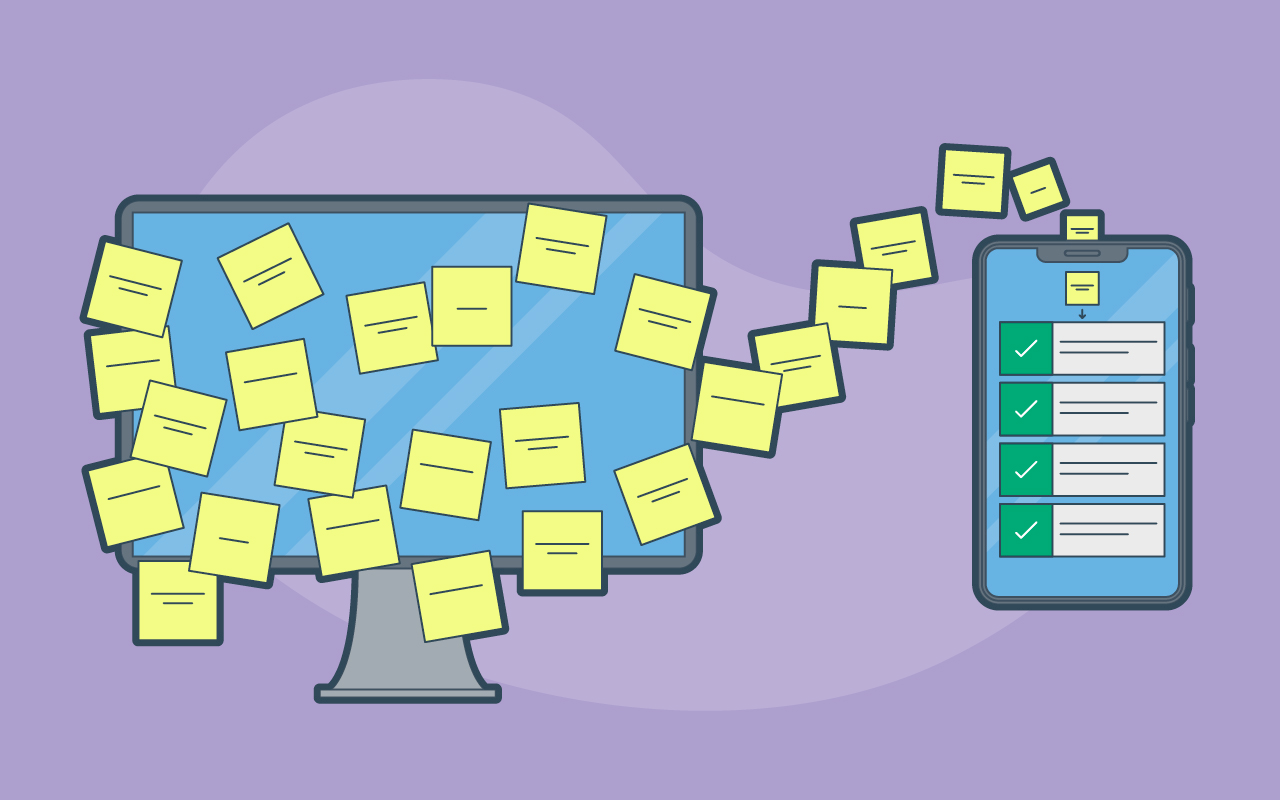The way that businesses approach technology is changing. In fact, 70% of all organizations will have accelerated use of digital technologies by 2022, transforming business processes, according to recent research from IDC. Because of this shift, there is a greater push to streamline support.
While businesses are looking to boost the delivery of support and services, one-size-fits-all service management just isn’t cutting it anymore, leading many to examine and upgrade their service management software. Unfortunately, this can also lead to overspending. According to Gartner, “Through 2023, I&O leaders will overspend by $750 million on buying unused features of ITSM tools, up from $600 million in 2019.”1 So how can you combat overspending while still ensuring you have access to modern service management? By implementing a few key ITSM best practices for service management
ITIL Framework for ITSM Best Practices for Service Management
You might be thinking “Doesn’t ITIL cover all of the best practices we should follow regarding service management?”
You’d be correct in thinking about ITIL as the best practice framework for ITSM, but it doesn’t encompass everything.
ITIL is defined as:
“A set of best-practice publications for IT service management. ITIL gives guidance on the provision of quality IT services and the processes, functions and other capabilities needed to support them.”
ITIL also describes processes, procedures, tasks, and checklists which are not specific to any singular organization or technology. These practices can be applied to knowledge management strategies and can be used with ITSM software.
Although ITIL provides an overall set of best practices for managing IT service management, there are a few other best practices that ITIL doesn’t necessarily cover to keep in mind to set yourself up for success.
7 Best Practices for Service Management Success
IT service management, and service management as a whole, runs best when there are a few key considerations made from strategy to implementation and beyond in your IT department. These seven key best practices can help propel your service management strategy to success.
Best Practice 1: Evaluate Your ITSM Maturity and Create a Clearly Defined Strategy Toward Business Goals
Often, the biggest error for a service and support team is having an inaccurate gauge on their current ITSM maturity, which leads them to create goals based on a starting point for which they are not actually ready. So, for that reason, the first best practice must be to evaluate maturity and then recognize areas where your service management strategy is not meeting expectations. For example, are there enough agents to meet your current demand? Do you have a service management tool in use? How are tickets being created? Do customers understand how to access information and submit tickets, or is it taking too long to process the tickets once they are submitted?
Once you’ve defined your baseline, your maturity level, and where you hope to scale your business and team, then you can strategically align service and support offerings with business goals. This will require checking in with key stakeholders from both the IT service desk as well as business leaders and the customers to whom you provide support. Then, you can come up with a plan with clear benchmarks in place to periodically check in and adjust your strategy.
Best Practice 2: Automate Tasks and Create Self-Sufficient Self-Service
Automation is one of the most critical best practices in ITSM. But, as Bill Gates once mentioned, automation applied to inefficiency will only magnify that inefficiency, so a key component of automation is to automate the most important and cleanly mapped out tasks.
Automation serves a few important purposes: freeing up the human agents for more complicated tasks, providing self-service to customers who will, in-turn, be able to better support their own customers, and creating a self-sufficient self-service experience. The whole of these parts amounts to the shift-left initiative – shifting Level-0/1 tickets to self-service and reserving agent time for Level 2 and up so that customers are bettered served and more highly satisfied.
To start with automation, consider the tasks that already have some degree of automation to them and work backward, keeping in mind what customers and agents need the most. Remember, automation shouldn’t replace humans, but should positively augment their experience.
Best Practice 3: Establish Metrics and KPIs for Your Service Management Strategy and Automation
You will need to establish key performance indicators (KPIs) for the IT service management software and any self-service additions to help you refine your strategy and identify areas of improvement. To help understand your level of ITSM success and identify improvement opportunities consider some, or all, of the following six metrics as a means of better understanding performance:
- Level Zero Solvable (LZS) – this is a measure that can be used to assess knowledge article strength (and suitability) prior to launching a self-service/self-help/self-care capability. But it also has an ongoing use as a success measure for self-service.
- Self-service usage – this needs to consider various dimensions. Firstly, there’s the absolute volume and then the percentage share of overall volumes. Secondly, there are different usage types to consider-knowledge access, support ticket creation, service requests, automated resolution/provisioning use, etc.
- Software success and failure levels – this can be both system-measured and ascertained via end-user feedback. For instance, the volume or percentage of knowledge searches that resulted in a ticket being raised.
- Costs – there’s the month-to-month cost per transaction trend (it will differ based on volumes) and in comparison with other support channel costs.
- Speed-related measures – whether self-service is speeding up resolutions and provisioning, resulting in lower levels of lost productivity.
- Employee experience/satisfaction – not only is the level of self-service performance against target and across time important, so is the relative level of satisfaction or happiness versus other access and communication channels.
Best Practice 4: Prioritize Customer Experience and Focus on Creating Value
When it comes down to it, the role of the service desk is to create value for the customer, and in turn, the business as a whole. In order to do that, you must push adoption of the ITSM and self-service initiatives. But how do you get the customers to avoid shadow IT and potentially frustrating workarounds? By focusing on making the customer experience a priority and creating value for the customer.
You can think of this as turning the service desk from a cost-center to a value-center. To do this, you must become customer centric.
To become customer centric, you must know your customer fully and implement outside-in thinking – and you have to do it as a team. You can begin by identifying who your customers are and mapping out their journey. This means taking a thorough look at each type of customer and fully understanding their needs at each touchpoint or moment. You can read more about how to identify different customer personas and map their journeys in this recent blog post.
The most important thing to remember in prioritizing and creating value for customers is that there is no way to provide a consistent experience to every customer, every time, if there is not a coordinated effort and easy way for agents to do so, which starts with the service management strategy.
Best Practice 5: Utilize an IT Service Catalog
Another service management best practice is to utilize an IT service catalog. The service catalog is one of the components in the Service Portfolio that is communicated publicly to employees.
To put it simply: The IT service catalog should be the go-to document to find IT services, hardware, software, and support. It is the vehicle for defining, prioritizing, and marketing IT services to individuals.
When you are creating your service management strategy, communication is at the core of success. Your service catalog tells your agents, customers, and managers what to expect, which can increase their adoption of ITSM and self-service solutions.
Best Practice 6: Choose an Effective Service Management Tool
Arguably the most important service management best practice is simply to choose an effective IT service management tool. Your ITSM tool will be the foundation for all of your IT services, from ticket creation, tracking, and incident management, to linking incidents together to understand greater problems. It might seem overwhelming to consider changing ITSM tools, especially if you’ve had the same software for years, but ITSM tool selection doesn’t have to be complicated.
The main factors to consider are the total cost of ownership (TCO) of any ITSM solution (which includes the cost of implementation and administration), maturity and scalability of the product, and ease of use. Of course, there are other factors to consider. You can read more about these factors in Gartner’s 6 Smart Steps for ITSM Tool Selection Success.
Best Practice 7: Create an Effective Service Management Team
Next to utilizing the best ITSM tool for your needs, creating an effective service management team within your IT department is another key best practice. Make sure your team is assembled before implementing any major service management changes or updates.
When assembling your team, think about work styles. For example, does your team work best in an agile environment, or a more traditional style? It’s likely that you won’t be starting from scratch with your team, which is a good thing. Understand who excels in which style of environment and learn each of your team members’ strengths. When your team feels empowered and are working in roles they personally enjoy, the business as a whole will have better results.
Take the Next Step with ITSM Best Practices for Service Management
These ITSM best practices for service management will lay a foundation for service management success – whether you plan to use your service management tool or strategy in IT alone, or plan to expand to other teams and departments.
To learn more about how EasyVista can help you meet your service management goals, you can read about EV Service Manager here.
1 Gartner, Gartner Report: 6 Smart Steps for ITSM Tool Selection Success, Chris Matchett, Rich Doheny, 21 November 2019, Refreshed 2 March 2021

Infographic – The status of SMB IT in 2026
Explore how AI, automation & integrated ITSM/ITAM are reshaping IT strategy—at every scale.


